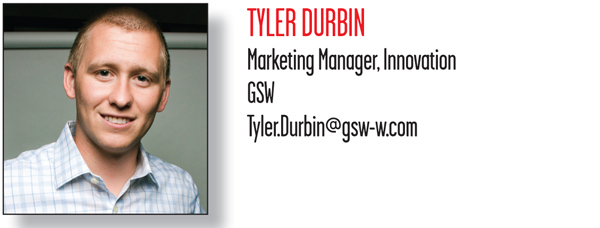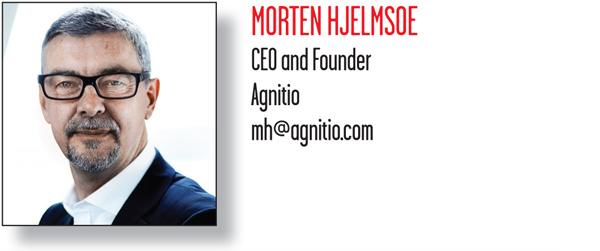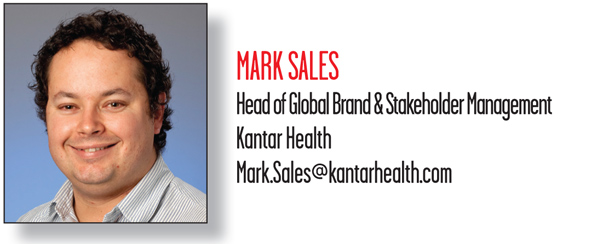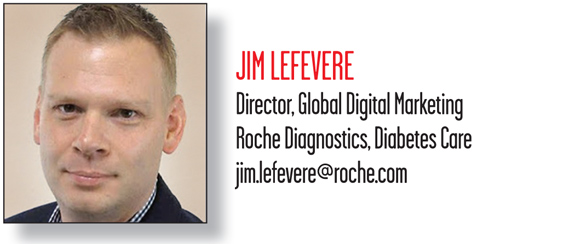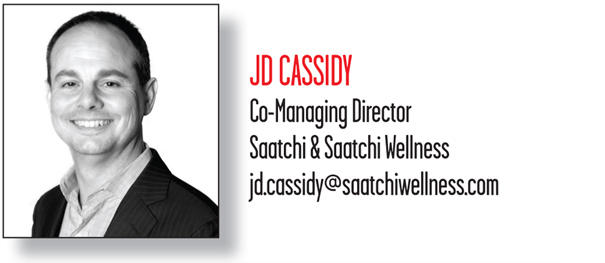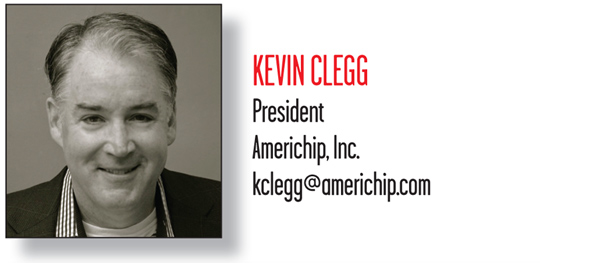The Pew Research Center defines Millennials as people born between 1981 and 2000, which means there are approximately 79 million Millennials in the U.S.—making it the largest generation since the Baby Boomers. According to a January 2012 comScore report, that represents a purchasing power of $170 billion per year. Since this is definitely a group that marketers want to know how to reach, we asked several experts from across the industry: How does your DTC strategy need to change when targeting this generation? What do marketers need to do to reach this demographic, one that is supposed to be less responsive to advertisements and known to have a shorter attention span? How can pharma successfully engage with a generation that expects everything now? What is your ultimate “Do” and “Don’t” when it comes to marketing to this generation?
For months I ignored free, on-site health screenings at work. I had no apparent signs of illness and felt like the young, healthy 27-year-old that I am. But when I found out via a direct mail piece that I could potentially avoid health insurance premium increases by participating in the screenings, my opinion changed. This is the Millennial approach to healthcare.
For generations, the assumption has been that the doctor and patient share the same goals. But Millennials are entering the exam room focused on finding care that is the most effective use of their time and money. They are leading a transformation and the patient/doctor relationship has become a buyer and seller exchange in which the perception is that each has inherently different goals, especially related to the price of treatment.
Premium brands such as Starbucks and Apple have had great success infiltrating this cost-conscious generation with premium products and prices. The challenges for DTC marketers will be even greater: Encouraging Millennials to take a more proactive role in their health and overcoming resistance to the cost of time and money. DTC marketers can find guidance in four general strategies, though.
1. Understand the various populations within the Millennial generation by investing heavily in research to decipher the needs and values of specific segments. Millennial parents are much more pragmatic than younger Millennials. They also have a greater appreciation for health. Urban Millennials have different access to care than rural Millennials.
2. Speak like real people, tell better stories and develop a brand identity that manifests the same ideals that Millennials value. Generally, this generation responds exceptionally well to highly creative advertising and messages that focus on the greater good, community and innovation.
3. Target brand messaging closer to a healthcare decision point. Millennials tend to avoid annual checkups, opting to seek care and research treatment as symptoms arise.
4. Create mechanisms that allow Millennials to self-educate versus simply being fed instructions. Seek a clear differentiation between product information and the marketing campaign. Millennials will respond to both if presented at the right time in the right place.
Is there one way to speak to such a broad and diverse group? Shouldn’t we instead be thinking about how to communicate with people as individuals? We have the technology to do it and this is the way that marketing is moving—for everyone, not just the Millennials.
The age of broadcasting to everyone is over. Instead, we should first seek to be relevant by creating personalized and responsive media. People are different and so each person requires different information delivered in different ways. So it’s less a question of what generation do you belong to but rather who are you as a person?
That said, it may be the case that this generation of people is more used to having information provided that’s “just for them,” i.e., relevant to their situation, because they grew up with a technology that allows for it. But it’s not something that only applies to them—it applies to everyone of any age.
Can Pharma Meet Millennials’ Rapid Fire Needs?
Is pharma actually being asked to respond in this way? The medical professionals may be, and with current regulations they are the gatekeepers of medical information. Pharma’s job is to keep the doctors informed and be a treatment partner.
But to answer the question, pharma needs to support medical professionals in their patient communication—creating systems that enable the doctors to provide communications that are highly relevant at an individual level. And that could include immediate answers on patient questions—information on demand. To do this, they need communications systems that truly are responsive and flexible. These exist but need to be implemented.
In the end, whether we’re a Boomer, Gen-X, Gen-Y or Millennial, we have a common desire: To be treated as individuals and have our own personal concerns addressed. What this means for pharma is that we should not be thinking about generations. That’s talking to groups. Instead, we need to think about individuals.
A key paradigm shift that’s happened during the lives of Millennials is that everything we touch is measurable, and this translates to healthcare very nicely. Millennials are more “experiential”—which TV advertising is not—and they live their lives online and increasingly in the mobile world. TNS’ Digital Life study tells us 39% of 21- to 24-year-olds are digital “influencers” compared with 20% overall in the U.S. This age group also “talks” about brands online, with 38% actively talking brands versus 25% overall. Millennials are moving to mobile, providing some clear opportunities for healthcare marketers. Companies such as Tictrac have focused on life events and bring together several experience-based apps (such as Fitbit, TripIt, MyFitnesspPal and Yahoo Finance) to help users get to their target. The mobile experience is the place for interactive marketing of relevant brands based on the data aggregator apps are collecting.
Attitudes and Opinions of Millennials
In Kantar Health’s National Health and Wellness Survey, 2012, we polled people born between 1982 and 1995 (Millennials) and those born before 1982. We found that Millennials are more likely to see what their friends or family think about a medication before taking it (25.25% versus 9.27%). However, both generations feel similarly about ads for prescription medications—approximately 21% in each group felt ads help them to have better discussions with their doctors, while about 40% feel they don’t get enough info from TV and radio drug ads.
Advice to Marketers
Do…remember that Millennials’ goals are very different from those of prior generations. According to Forbes and the Harvard Business Review, happiness and experiences are among their top priorities—and this changes your marketing focus. Companies outside of healthcare are differentiating and succeeding based on customer experience and reputation. Maybe it’s time we follow their lead.
Don’t…assume all Millennials are the same. They are polarized from a wealth perspective—with 16% in the U.S. unemployed, but 11.8 million earning over $100,000 annually.
Marketing success today is much more of a science than an art. The keys to marketing to Millennials are essentially the keys to operating a successful business and marketing in the digital age. Digital technology has changed the rules irrevocably and driven the need for companies to reveal their most authentic selves, focus on nurturing relationships and provide consistent value.
Generations are often grouped by birth rates, trends and shared experiences. For Millennials, shared experiences start with the Internet, social networks, cell phones and text messaging. Their media habits are different and they consume information differently. Generally, Millennials are always connected, relationship-based and socially conscious—and due to the economic situation over the last five years, they haven’t fully started to flex their wallets yet. As Millennials grow older and the economy improves, they will be a force that cannot be underestimated. Laying the groundwork by focusing on having the right people, platforms and processes in place to efficiently manage marketing (digitally) and effectively reach Millennials should be a strategic priority for pharma and medical device marketers. A few of the things to consider when developing strategies:
Be authentic. Millennials are digital natives who readily use information and social channels to do their homework.
Make the digital experience reign supreme. Millennials expect nothing less.
Focus on quality and service. A competitive product is a click away, and Millennials are active reviewers of everything.
Be socially aware. Millennials base their decisions on service orientation and social consciousness.
Perhaps the most important strategic change: Be sure you have the right strategy in place to be successful on a long-term basis. Purchasing decisions will be made in a much different way. Developing strategies now that align practices to new consumer demographics and purchasing behaviors in the future are critical to ensuring success in the digital age—and in marketing to Millennials.
Our industry has learned the importance of placing the right content in the right channel at the right time. We believe that in order to engage with Millennials the content needs to be personal, the channel needs to be social and the right time is now.
We know that Millennials are influenced less by promoted product benefits and more so by the personal results of product usage. Their willingness to rely on product reviews on social media and peer networks demonstrates this. They want to know how things really work, not just what the product could or should do. They want to hear personal stories and tell their own. Luckily, technology is evolving to help us do just that.
One way to both gather personal data and communicate it instantly to Millennials is through wearable technology. The Jawbone Up, Fitbit, Nike FuelBand and Samsung Galaxy Gear watch are just a few examples of this trend. Consumers, especially Millennials, are taking a proactive interest in their own health and wellbeing, and brands are responding with technology that helps them to live better. For instance, you can now track your nutritional intake, and services like 23andMe give you access to your own genetic data.
The opportunity for pharma is to help merge personal health data from multiple sources into useful information, taking disparate data points that are being tracked and captured in different apps and making something useful and meaningful that drives engagement and better health decisions.
As real-world evidence becomes more available, Millennials will be looking for access to those results to make smart decisions about their health, wellness and lifestyle. Our industry needs to be prepared to provide such access in order to remain an influential contributor to Millennials’ health and wellness decision-making.
In today’s dynamic and ever-growing digital world, it’s not surprising that surveys and studies tend to show that Millennials are less responsive to traditional advertising. Today’s consumers are overwhelmed with messaging and information flow. This is especially true with Millennials. Whether it’s their smartphone, tablet, laptop, desktop, widescreen HD TV or other slick device, Millennials are taking in content during every waking hour.
As marketers, our challenge is to create compelling video content and deliver it on unique and evolving devices. Beyond websites, TV spots and mobile, what other viable delivery options are available that would increase desired results from a campaign?
These “traditional” mediums, which we like to call the first, second and third screens, will always be relevant. But today’s generation of Millennials are often too busy with other non-business related info and content on these first screens to accept marketing materials efficiently. Good marketers must explore more unique and technologically advanced ways to reach and capture their target audience, especially in regard to Millennials who are constantly looking for the next big thing.
Submerging the viewer is the key as the field moves into the future, which is why marketers should focus on interactive campaigns that deploy cutting-edge technologies to offer consumers an engaging experience. Conventional marketing wisdom calls for repetition to the masses in order to achieve branding goals. In a society where digital content is everywhere, quality trumps quantity and engagement trumps repetition.
Overall, in order for healthcare marketers to reach Millennials and hold their attention, they need to not only keep the content focused and relevant, but also remain open to exploring other more unique and innovative ways to deliver video content while also engaging the consumer through interactive technologies. These new technologies and form factors become the fourth, fifth and sixth screens that marketers have been looking for to better reach and communicate with their Millennial target audience.


